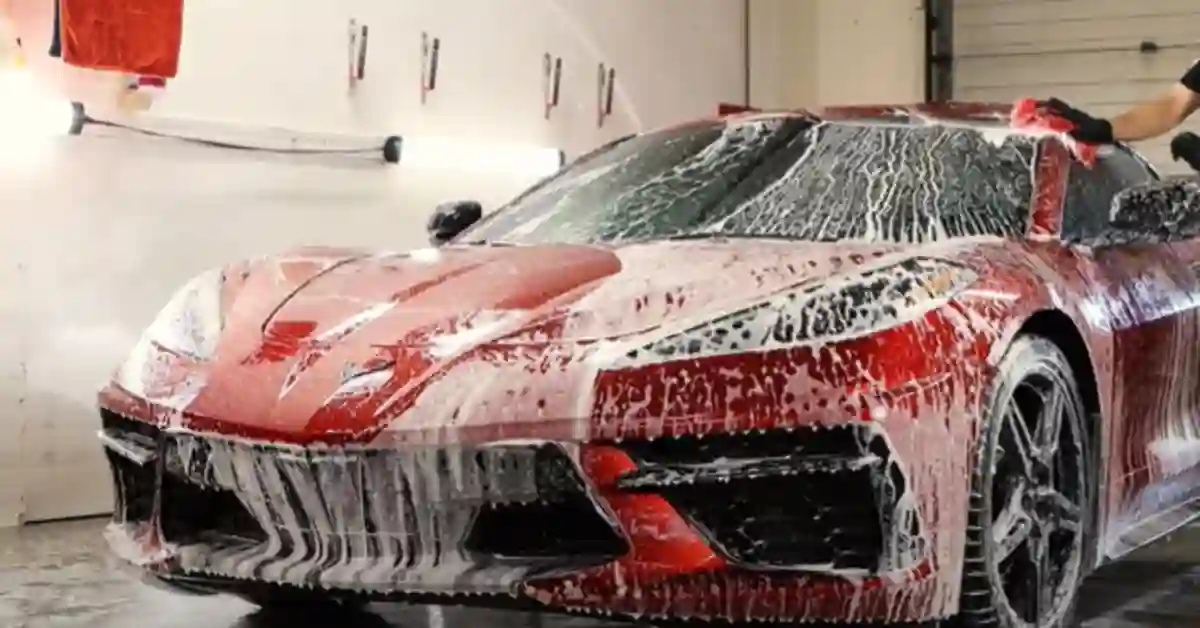Just last week, a client brought in their ceramic-coated Tesla for inspection, amazed that the coating was still performing beautifully after four years. As someone who’s installed and monitored thousands of ceramic coatings over the past 15 years, I’ve learned that how long a ceramic coating lasts on a car depends on various crucial factors.
Through my experience managing a high-end automotive protection facility, I’ve tracked the longevity of different coating brands across various vehicle types and usage conditions.
Today, I’ll share my real-world insights to help you understand that How Long Does a Ceramic Coating Last on a Car? Let’s dive in!

How Long Does a Ceramic Coating Last on a Car?
Understanding Ceramic Coating Durability
The lifespan of ceramic coating isn’t just about the product quality – it’s a complex interplay of multiple factors that I’ve observed through years of professional installations and long-term monitoring.
Professional-grade ceramic coatings typically contain higher percentages of solid content compared to consumer products. Through extensive testing, I’ve found that these professional formulations generally last 2-3 times longer than their DIY counterparts.
Most people don’t realize that the initial application process significantly impacts how long a ceramic coating lasts on a car. I’ve seen perfectly good coatings fail prematurely due to poor surface preparation or improper application techniques.
Factors Affecting Ceramic Coating Longevity
Environmental Conditions
Through years of tracking coated vehicles, I’ve observed that environmental factors play a crucial role in determining how long ceramic coatings last. Extreme weather conditions can significantly impact coating performance and durability.
UV exposure is particularly challenging for coating longevity. Vehicles regularly parked outdoors in sunny climates typically show faster degradation of their ceramic coating compared to garage-kept vehicles. I’ve documented this difference through systematic monitoring of client vehicles.
Chemical exposure from industrial fallout, bird droppings, and acid rain can also affect coating durability. In urban environments, I’ve noticed that coatings often require more frequent maintenance to maintain their protective properties.
Maintenance Practices
The maintenance routine dramatically influences how long a ceramic coating lasts on your car. Through years of client education and follow-up care, I’ve developed a clear understanding of maintenance practices that extend coating life.
Regular washing using appropriate products is crucial. I’ve seen coatings last 5+ years with proper maintenance, while similar coatings failed within 2 years due to improper care routines. The difference lies in using pH-neutral shampoos and avoiding harsh chemicals.
Professional maintenance services play a vital role in coating longevity. Periodic inspections and decontamination treatments help maintain the coating’s protective properties and hydrophobic effects.
Professional vs. DIY Ceramic Coatings
Professional Coating Lifespan
Professional ceramic coatings, when properly applied and maintained, typically last 3-7 years. This extended lifespan comes from higher-quality formulations and expert application techniques.
The preparation process for professional coatings is extensive. In my facility, we spend 15-20 hours on paint correction and surface preparation before applying the coating. This thorough prep work significantly impacts how long the ceramic coating lasts on a car.
Professional installations also include multiple layers of protection. I often apply 2-3 layers of coating to high-wear areas, significantly extending the protection duration in these vulnerable spots.
DIY Coating Performance
DIY ceramic coatings generally last 1-3 years, depending on the product quality and application expertise. While they can provide decent protection, their longevity typically falls short of professional installations.
The main limitation of DIY coatings isn’t necessarily the product quality, but rather the application environment and expertise. Without proper paint correction and controlled application conditions, even good products may not achieve their full potential lifespan.
Many DIY enthusiasts underestimate the importance of surface preparation. I’ve had to remove and reapply numerous failed DIY coatings where inadequate prep work led to premature failure.
Maximizing Ceramic Coating Lifespan
Proper Maintenance Techniques
Based on extensive experience monitoring coated vehicles, I’ve developed specific maintenance protocols that help maximize how long ceramic coatings last on cars.
Weekly or bi-weekly washing using pH-neutral shampoos helps maintain coating performance. I recommend specific washing techniques to my clients, emphasizing the importance of using proper materials and methods to avoid degrading the coating.
Quarterly decontamination treatments remove embedded contaminants that can degrade the coating over time. These professional maintenance services play a crucial role in extending coating lifespan.
Protection Strategies
Protecting your ceramic coating from extreme conditions can significantly extend its life. Through years of observation, I’ve identified several effective protection strategies.
Garage storage, when possible, provides the best protection against environmental factors. I’ve tracked identical vehicles with different storage conditions, finding that garage-kept vehicles maintain their coating’s performance up to 40% longer.
Paint protection film (PPF) combined with ceramic coating offers the ultimate protection solution. This combination, while more expensive initially, can extend the effective life of both protective layers.
FAQs About How Long Does a Ceramic Coating Last on a Car?
1. How long does ceramic car coating last?
-
Ceramic coatings can last anywhere from 2 to 7 years, depending on factors such as the quality of the product, how well it is maintained, and environmental conditions. High-quality coatings applied professionally can last up to 5 to 7 years, while DIY products may last closer to 2 to 3 years.
2. How much does a 7-year ceramic coating cost?
-
The cost of a 7-year ceramic coating can vary significantly depending on the brand, the professional application, and the region. On average, you can expect to pay $500 to $1,500 or more for a professional application. DIY kits typically cost between $50 and $150.
3. What destroys ceramic coating?
-
Harsh chemicals (such as strong acids or alkalis), abrasive washing techniques, and extreme environmental conditions (e.g., exposure to bird droppings, tree sap, or road salts) can degrade the ceramic coating over time. Additionally, heavy-duty scrubbing or non-pH-neutral soaps can weaken its protective layer.
4. What happens after 3 years of ceramic coating?
-
After 3 years, a ceramic coating may begin to lose its hydrophobic (water-repellent) properties. The paint protection will gradually wear down, and the car may no longer resist contaminants as effectively. Routine maintenance, such as applying maintenance sprays, can extend the coating’s lifespan and help retain its protective properties.
5. What are the disadvantages of ceramic coating?
-
Some disadvantages of ceramic coating include:
-
High initial cost (for professional applications).
-
Time-consuming application process, especially if done by a professional.
-
Not a complete protection – it doesn’t make the car scratch-proof or immune to damage.
-
Requires regular maintenance (e.g., top-up sprays) to maintain its effectiveness.
-
Potential for improper application if DIY, leading to uneven results or damage.
-
6. What is the life expectancy of 3M ceramic coating?
-
The life expectancy of 3M ceramic coatings typically ranges from 2 to 5 years, depending on the specific product used and how well it’s maintained. Some of their higher-end products can last up to 7 years with proper care and maintenance.
